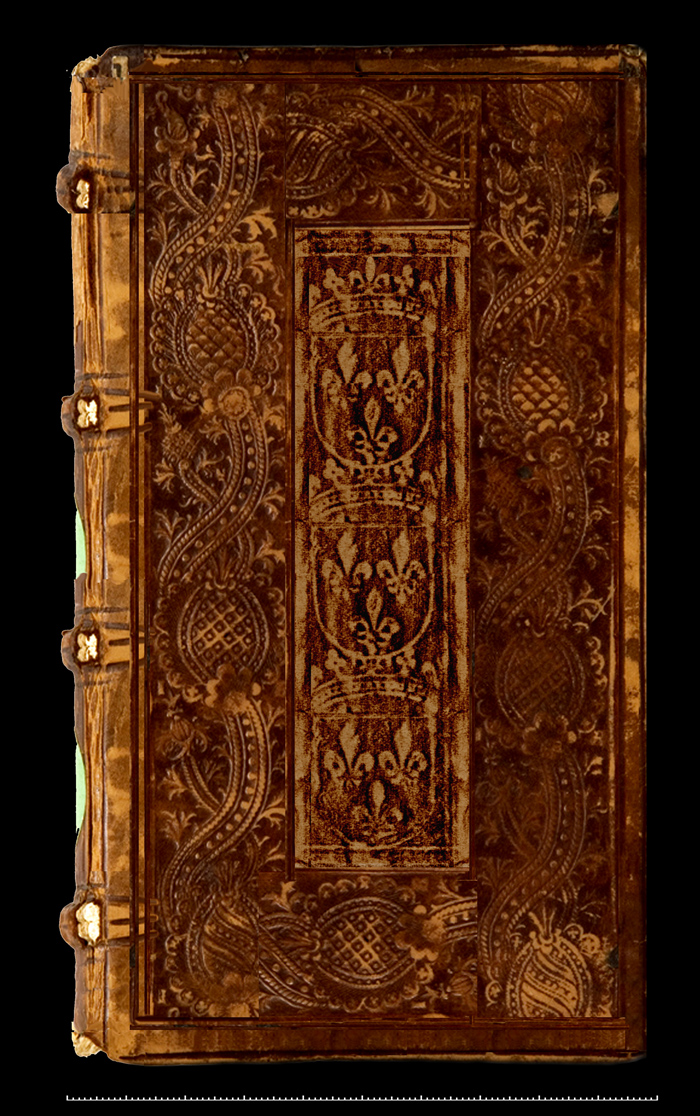

| In the last two pages we have looked at the tools that make up the her 1 imprint. We can now follow this beginning by looking at the other important tool shown in Denise Gid's binding 618 which was her only example of this type with the her 1 imprint. This makes an interesting study for a number of reasons. Firstly, no one else seems to have looked closely at this tool in relation to the Louis XII et Francois Ier bindings, and secondly we now have three examples to study . Another reason being is that this tool is one of the most beautiful and interesting examples of renaissance art and decoration ever created in the cause of decorative bookbinding. The tool, a roulette, or roll as it is sometimes called, is simply a mounted wheel with a pattern engraved on the outer edge, constructed so as to put down a continuous unbroken pattern. Mainly designed to lay down a single line, they are rarely made to leave such a large pattern as this one. In the catalogue of BSG (Blind-tooled Bookbindings from the BIBLIOTHEQUE SAINTE-GENEVIEVE 12th -18th Centuries) we find reference to it as, Entrelacs d'ananas which translates as interlaced pineapples. For the moment, it might be simpler just to call it a pineapple roll. Denise Gid has catalogued 9 different examples AEa1 to AEa9, "A" being Ananas and "E" for entrelacés. This is comparatively few for her sample of 700 or more blind stamped bindings from the early to mid 16th century. Looking at these examples we see that the first, EAa1, is more detailed and unlike all others in that it is signed, bearing the initials "I B". (We can have a big party the day someone figures out just who these initials belong to!) |
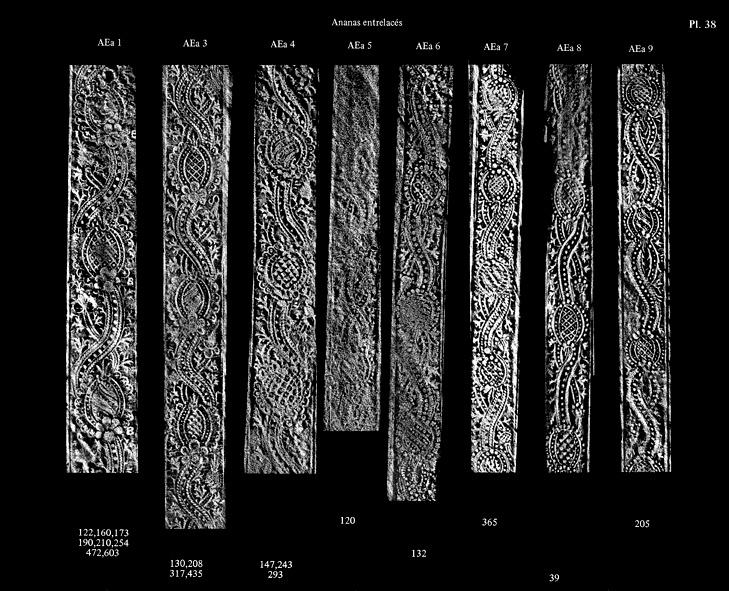
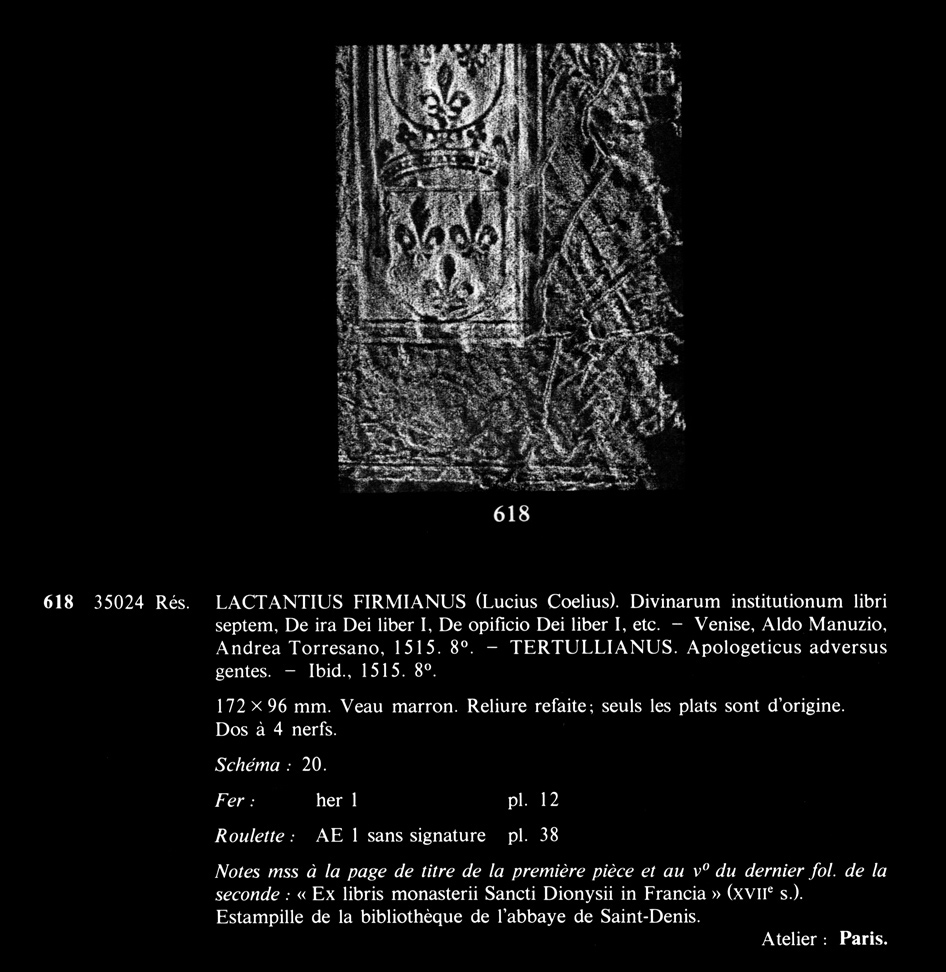
| In Figure 2, I have reproduced the 618 rubbing as well as the catalogue details for this binding. Gid has listed the roulette as AE 1 unsigned, by this I suppose she means EAa1. Unfortunately in a binding of this sort where the detail has all but disappeared, even a rubbing does not allow us to verify whether or not this is actually an EAa1 unsigned, or not. I have reproduced the binding above with the aid of some borrowed strips of EAa1, which anyway, may be close to what this binding originally looked like. Leaving this sticky issue aside, for the moment let us first just examine EAa1. |
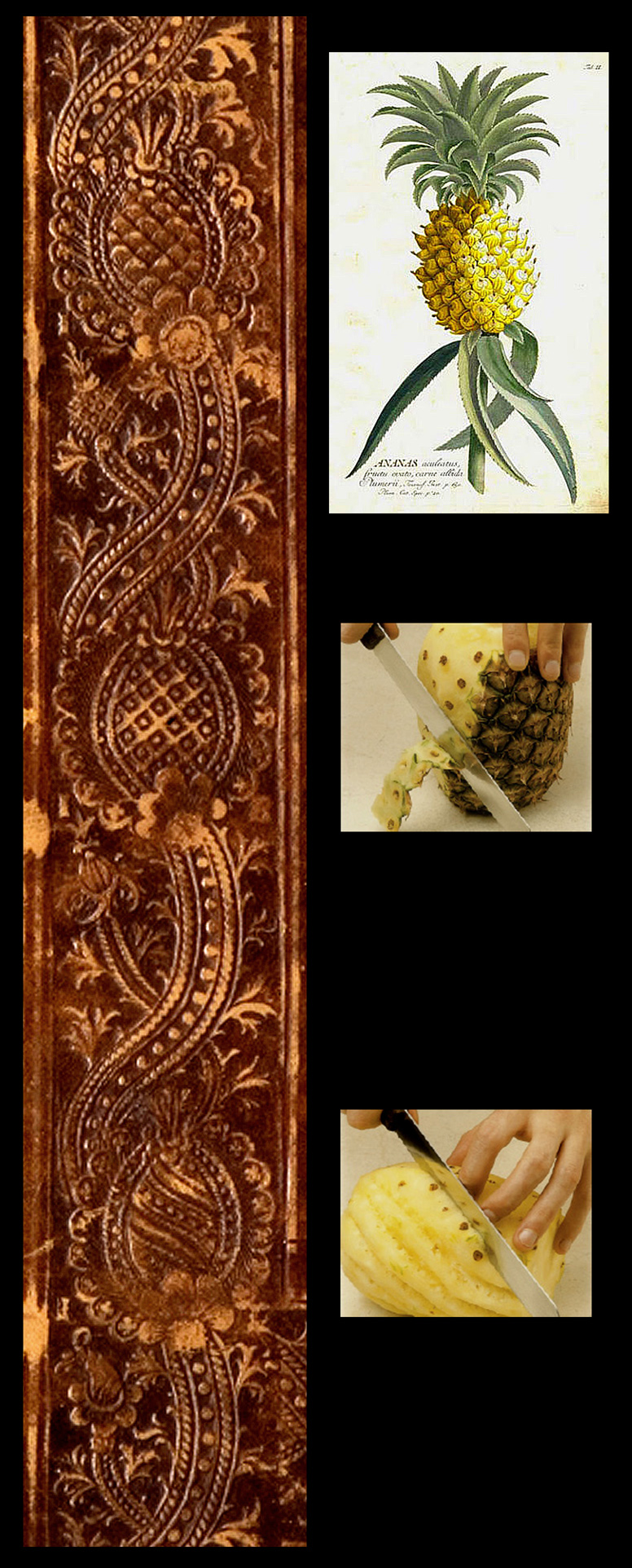
| In Figure 3, I have added some photos to illustrate what I think may be being portrayed in this fascinating decorative masterpiece. Considering that the pineapple was virtually unknown in Europe until 1514. and even then only a luxury known to certain Royal courts (here information is scant), one wonders how this very accurate and yet abstracted motif suddenly emerged. What is not perhaps surprising is that this particular motif is found on three (so far) bindings bearing the same crown and shield found on the bindings of Louis XII and Francois Ier. Two of the examples appear to be type EAa3 which closely resembles the EAa1, nearly identical in fact, but the design has been reversed. At first I thought this may be a paired set of tools, however the lack of the "I B" signature and certain other small but definite design differences leave some doubt. |
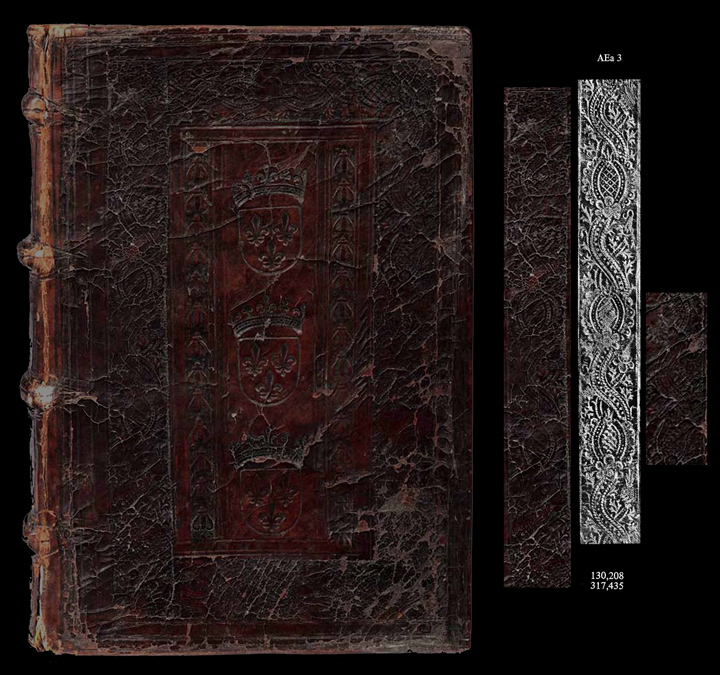
| As mentioned previously, early in my research into the Louis XII bindings, I discovered, on the internet, a photo of one that had been sold at an Alde auction in Paris, November 2007. In the Alde catalogue we find an excellent description of this binding.... Elle est décorée d'une large bordures "d'ananas entrelacs" et de deux roulettes à "la mouche". Notons que Denise Gid,Catalogue des reliures françaises estampées à froid dans la bibliothèque Mazarine, décrit sous le numéro 618, une reliure très proche de la nôtre, présentant le même fer d'armoiries ( her 1), accompagné d'une roulette à l'ananas (AEa1, la nôtre étant plutôt AEa3). Here they are absolutely right in assuming that the roulette on this binding is an AEa3 as can be seen in enlargements found in Figure 5. |
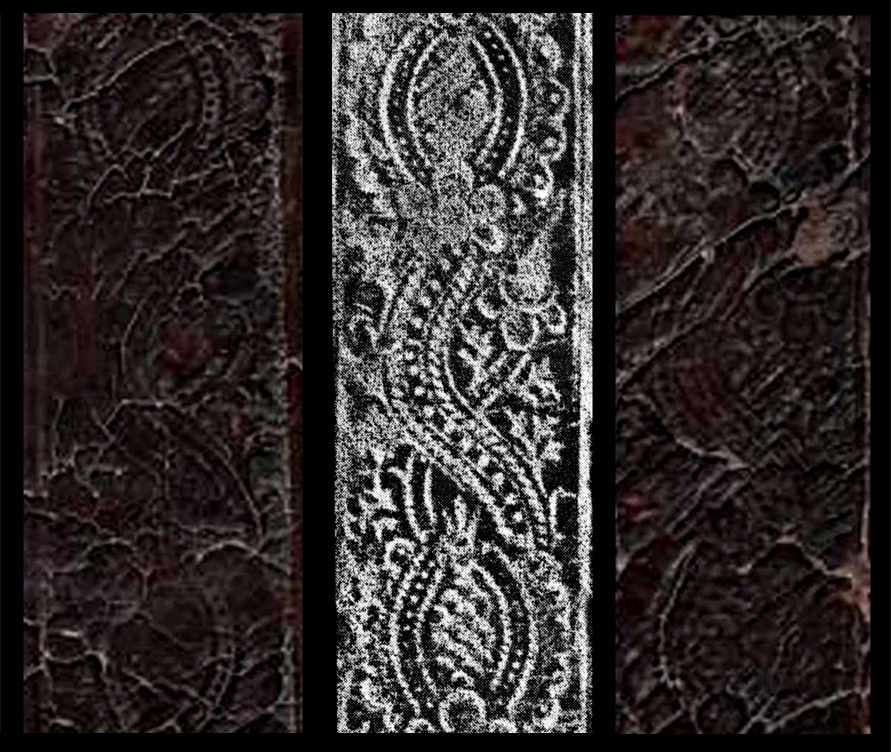
| Even though the photo of binding No. 35 is not high resolution, we can still see that the detail of this roulette is only just visible in some parts. Fortunately the parts that are still visible contain some important details that allow us to confirm that this is indeed a AEa3 example. On binding No. 34 the detail is even more difficult to see. In Figure seven, I show an enlarged section of the roulette imprint, this has been enhanced with a number of filters, revealing important details that enable us to confirm that this is also another AEa3 example. This is an important discovery as it confirms that these tools are linked to the atelier that made the Louis XII bindings. Denise Gid has listed three other bindings that are decorated with the AEa3 roulette a closer examination of the tools found on these bindings is therefore warranted, in the next few page we will look at some of these other tools, however we should perhaps first look at another important large roulette that is also associated with the bindings made by the atelier of Louis XII and François Ier, the roulette renaissance à vasques. |
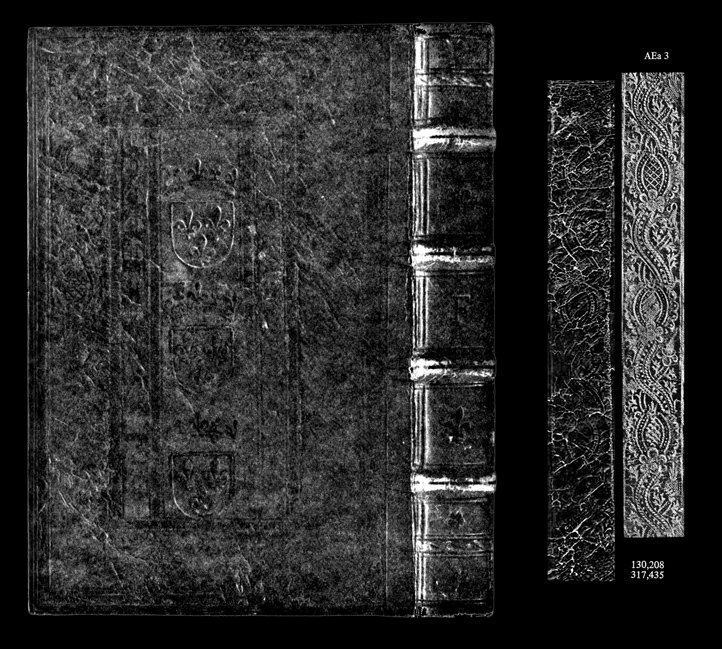

| Go to Digital Alchemy | return to the home page of cyclopaedia.org |